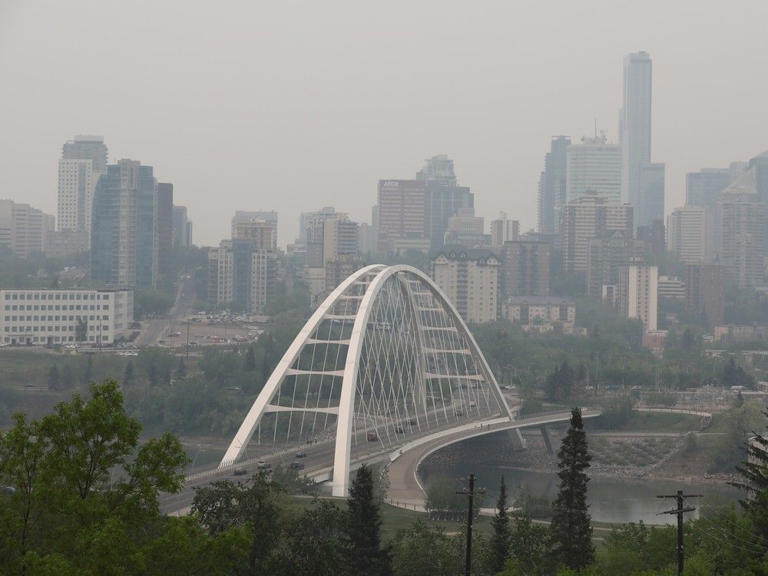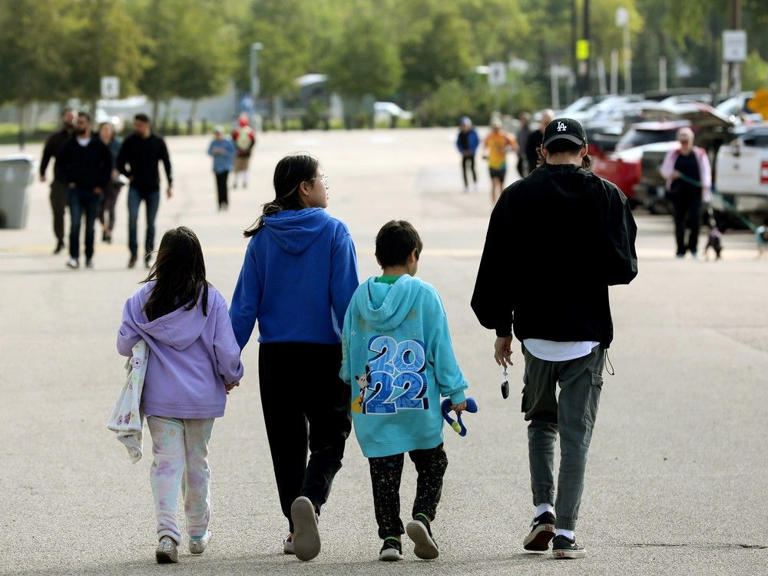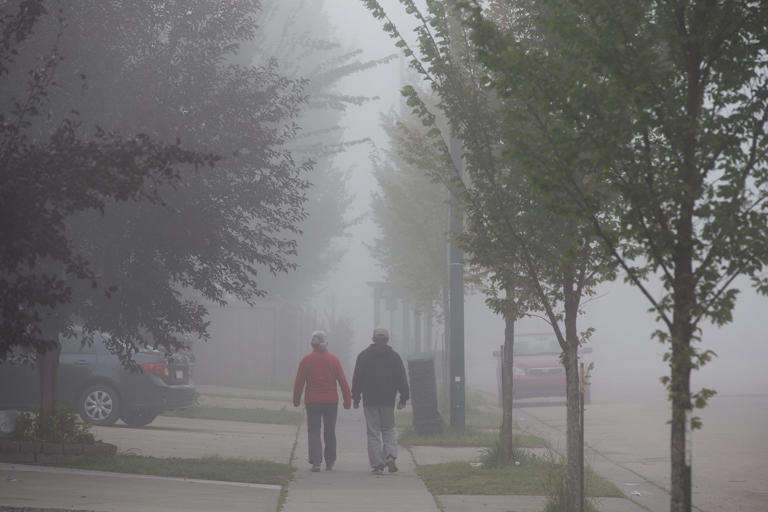'Learning to live with fire': New study details impact of 2023 wildfire season
Story by Cindy Tran •

Wildfire smoke blankets Downtown Edmonton on May 19, 2023.© Provided by Edmonton Journal
Researchers across Canada have released a new study on the 2023 wildfire season classifying it as a record-breaking year across the nation.
An early wildfire season spanning from late April 2023 to early November 2023 has had “profound” impacts on Canadians, from health issues due to mass amounts of smoke to record-breaking evacuations.
Postmedia spoke to Ellen Whitman, a forest fire research scientist with Natural Resources Canada in the Canadian Forest Service, and one of the authors of the new study. She said the residual impacts of the 2023 season will make the 2024 wildfire season in Alberta challenging due to the lack of recovery from the drought.
Here’s a breakdown of the main causes of the 2023 wildfire season, impacts on communities and how it will inform 2024.
Extreme weather, drought among drivers of 2023 season
A combination of extreme weather conditions, primarily the early season drought, early snowmelt and sustained extreme fire weather were large contributors throughout Canada in 2023, according to the report.
Several indicators throughout the research illustrated a record-breaking year, with more than 15 million hectares burned in Canada in 2023 from April to October, seven times the historic national average of about 2.5 million per year.

Evacuees from the Yellowknife wildfires arrive at the wildfire evacuation centre at the Edmonton Expo Centre, Saturday Aug. 19, 2023.© David Bloom
Whitman said researchers often talk about extremities in percentile. The 95th percentile which would be considered an “extreme outlier above average fire conditions” was seen in forested areas across the country, particularly from May to June.
These extreme conditions were mainly concentrated in northern Alberta, northern British Columbia and the southern Northwest Territories
When looking at the distribution of the number of days spent above the 95th percentile of weather conditions in 2023, places like northern Alberta had over 60 days above that condition, which Whitman said is “really dramatic” and affected a lot of the country.
“A year that extreme was a function of the weather which is indirectly a function of the climate,” Whitman said. “There’s a very strong tie to what we’re experiencing and the atmosphere conditions which are associated with anthropogenic climate change.”
‘Learning to live with fire’
With low snowpacks throughout western Canada, Whitman anticipates the most challenging aspect of the 2024 wildfire season is the lack of recovery from the 2023 drought.
“When we enter the spring in a drought condition already and then very low snowpack, often those are indicators of high area burned the next year or the next spring a nd a lot of that is essentially a holdover from last year because we just didn’t get the relief from that drought,” Whitman said.

Dry grass frames the downtown Calgary skyline on Wednesday, January 31, 2024. Drought conditions are forecast again this summer in southern Alberta.© Gavin Young
Holdover fires, which are dormant and often undetected, persist year to year. It is possible for fires to move underground for a period of time, for weeks or even months. When the weather dries out and temperatures rise these fires can flare up again.
After experiencing a wildfire season like 2023, Whitman says communities need to be more proactive, citing the benefit to fuel mitigation around communities, whether through fire smart thinning of prescribed burning or trying to get ahead of the problem by treating the landscape.
“I certainly think that some of it is going to be learning to live with fire, as we saw in 2023,” Whitman said. “It’s beyond our capacity, at least at present, to extinguish all these fires. To some degree, we do need to sort of adapt the ways that we live alongside fire, accepting some of them, allowing some to burn under conditions that are favourable and in locations where people are not endangered.”
Thousands forced to evacuate, poor air quality
According to the study, 232,000 people across 12 of the 13 provinces and territories were forced to evacuate. The study notes the largest wildfire evacuation in Canadian history came in 2016 when 88,000 people where forced to leave Fort McMurray.
Canada experienced five of the largest evacuations since 1981, among them was Edson. The town about 200 km west of Edmonton, with a population of just under 9,000, experienced the ninth biggest evacuation across the country with multiple evacuations in 2023.

Pedestrians make their way through the heavy fog and smoke in Edmonton on Aug. 25, 2023. A special air quality statement was issued as smoke from wildfires continues to cause poor air quality and reduced visibility.© Provided by Edmonton Journal
According to the study, eight people working on the wildfires in Canada were killed in the 2023 fire season.
Poor air quality throughout the season resulted in several extreme weather warnings against going outdoors. Fires in the southern Northwest Territories and northwestern Quebec were particularly influential sources of smoke in 2023.
“There was really extreme levels of smoke within Canada that affected a lot of different communities and because of the long-distance transport of smoke, those effects were really profound,” Whitman said. “So many people across Canada, even at large population centres that may not necessarily have been close to fires, had really, really poor air quality sort of on the scale that hasn’t been recorded in recent history.”
Alberta saw record-breaking numbers
Alberta saw 2.2 million hectares burned between Mar. 1 and Oct. 31, 2023. The province’s five-year average prior to this year was 226,000 hectares of burned land.
Alberta had the warmest fire season since 1940, particularly up north, according to Whitman.
“In terms of temperature and then in terms of moisture or vapour pressure deficit, which is essentially a measure of how much moisture holding capacity the air has which represents how dry the fuels are, it was the driest year generally since 1940.
In Alberta, June is typically referred to as “June monsoon” following a warm, dry and sometimes windy spring — the promise of rain in June is supposed to help, but last year there was a lack of precipitation in the north and south, which were extremely dry.
The wildfire season traditionally runs from March 1 to Oct. 31. However, on Feb. 20, the Alberta government declared an early start to the 2024 season , 10 days earlier than usual.
No comments:
Post a Comment